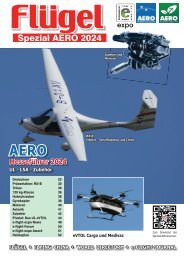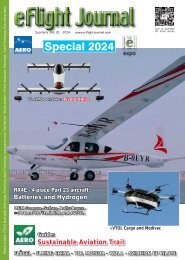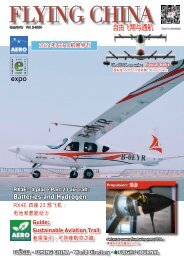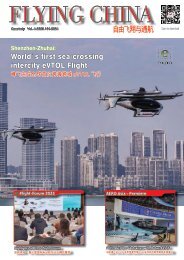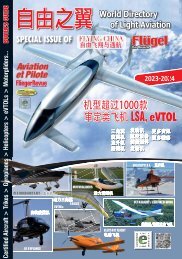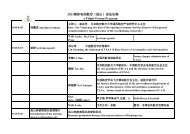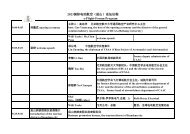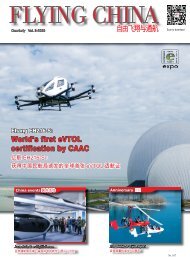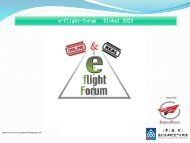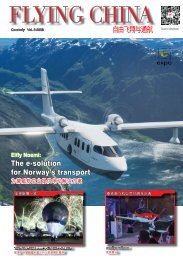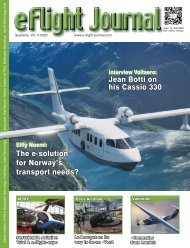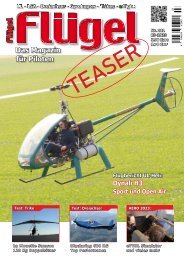You also want an ePaper? Increase the reach of your titles
YUMPU automatically turns print PDFs into web optimized ePapers that Google loves.
e Visions<br />
Aurora’s eVTOL approach<br />
Photos: Aurora Flight Sciences<br />
Aurora Flight Sciences is an American aviation, aeronautics research<br />
company which primarily specializes in the design and construction<br />
of special-purpose Unmanned aerial vehicles. Founded in 1989 Aurora<br />
has a heritage of highly efficient aerodynamic designs and innovative<br />
projects including human-powered airplane and solar airplanes.<br />
NNot a newcomer to the VTOL arena, Aurora has developed<br />
its own line of <strong>small</strong> vertical takeoff UAVs known as<br />
GoldenEye, but XV-24A lightning is really what catches people’s<br />
eyes. XV-24A is created by Aurora along with partners<br />
Rolls-Royce and Honeywell. It is funded by the Defense<br />
Advanced Research Projects Agency (DARPA) and is developed<br />
for the Vertical Take-Off and Landing Experimental<br />
Aircraft (VTOL X-Plane) program. LightningStrike is the first<br />
aircraft designed to demonstrate the distributed hybrid-electric<br />
propulsion ducted fans, innovative synchronous electricdrive<br />
system, both tilt wing and canard for vertical takeoff<br />
and landing and high efficiency in both hover and highspeed<br />
forward <strong>flight</strong>.<br />
Aurora is not only experienced in VTOL designs, but also is<br />
a leading company in autonomous <strong>flight</strong> control. As early as<br />
in 2012, Aurora has successfully demonstrated fully autonomous<br />
takeoff and landing capability in a converted Diamond<br />
DA42 optional piloted aircraft (OPA). In May <strong>2017</strong>, Aurora<br />
trumpeted the fact that one of its robots has successfully<br />
landed a simulated Boeing 737. What Aurora has built in the<br />
form of the robot rig uses “in-cockpit machine vision, robotic<br />
components to actuate the <strong>flight</strong> controls, an advanced tablet-based<br />
user interface, speech recognition and synthesis”<br />
to do the job. This accomplishment makes readers wonder<br />
if an auto robot arm could land a passenger jet, how easily<br />
would it be to land a <strong>small</strong> aircraft?<br />
Aurora’s advantages are obvious: they have experiences in<br />
airframe design, autonomous <strong>flight</strong> control and VTOL. These<br />
three elements are really a perfect combo when designing<br />
an autonomous eVTOL. This is perhaps the reason why<br />
UBER partnered with Aurora at the UBER Elevate conference<br />
in April of this year.<br />
Aurora’s design principles of their eVTOL are: keep it simple,<br />
design for efficient cruise, and base design on existing technology.<br />
If these requirement may sound too conservative,<br />
perhaps it also indicates Aurora’s intention to get the eVTOL<br />
prototype airborne as soon as possible. After all, according<br />
to UBER’s plan, the first test bed <strong>flight</strong>s are scheduled to begin<br />
in 2020, only three years from now. To achieve the goal,<br />
Aurora’s initial prototypes may only have 25 miles range at<br />
the beginning, and the commercial available models may<br />
37 e Flight Journal




